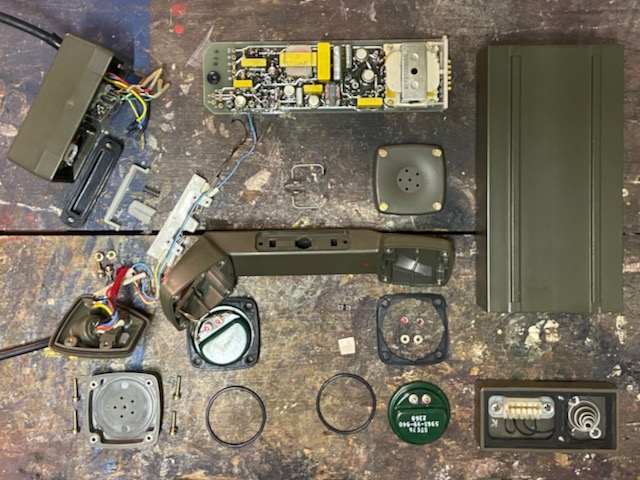
The Norwegian Army field phone TP-6N was developed by A/S Elektrisk Bureau (EB, Then an Ericsson subsidiary) in the early 70ies. With 1.8kg (4lb) the instrument is very lightweight compared to other Fieldphones. The original EB designation was DPAR 00103. The instrument here presented is designated DPAR 00104/3, TP-6N-A. The difference between the initial TP-6N to the "N-A" is unknown to me.
EB delivered 27000 pieces to the Norwegian Army between 1973 and the 80ies and also delivered to the dutch army and to several other countries, amongst them Finland, Spain, Colombia, Nigeria, the Filipines and others. In 1973 A/S Elektrisk Bureau were awarded the Norwegian Design Prize for this instrument.
In the early 60ies EB developed a telephone which uses a microphone amplifier and tone ringing through the electrodynamic microphone which was introduced on the Norwegian PTT network in 1967. The TP-6N uses a similar speech and tone ringing circuit, also using the tx side of the handset as ringer loudspeaker. The magneto is replaced by a transistorised ring current generator. On tp6n.blogspot.com you can find pictures of the board of a later (probably 80ies) version TP-6N-C which uses DIP packaged transistors. The handset is made of moulded plastic and also waterproof. It uses the same electrodynamic element for RX and TX.
As far as I can tell it was the first transistorised field instrument, and also the last military field instrument developed primarily for analog local battery networks.
(Clearly not the first transistorised, earlier examples are eg. the Russian TA-57, also not the last analog local battery instrument later examples eg. the British PTC 414).
If now, in the 21st century, for some reason you really need an LB field instrument, it is the most useful option.
tp6n.blogspot.com is very good technical resource for the the instrument, it mentions their use of the TP-6-N for cave rescue missions.
The optional dial unit to use the instrument on automatic network lines can be mounted instead of the standard battery side lid. The unit uses a standard rotary dial mechanism. A LB/CB switch allows to use the instrument still in LB mode also with mounted dial unit. To store the instrument with a dial unit mounted an adapted canvas bag was available.
(The photos are not from the same instrument, but same mfg. year. The photos of the closed instruments are the one from the video, the ones of the opened instrument are from one which anyway needed repair).
Disassembled.

Empty pouch.
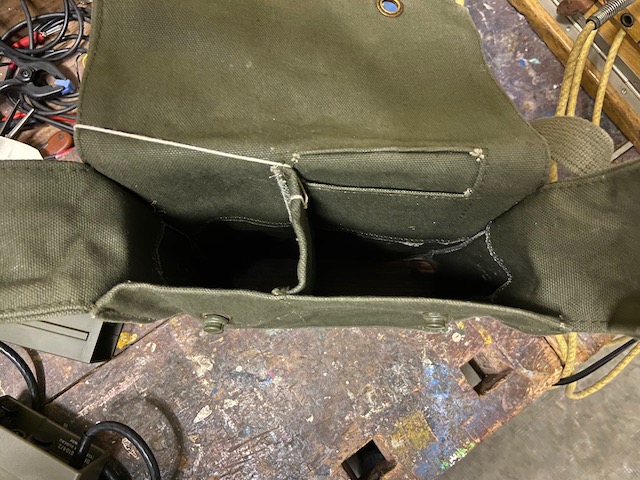
Empty box.
Made of a two bay extruded aluminum tube.
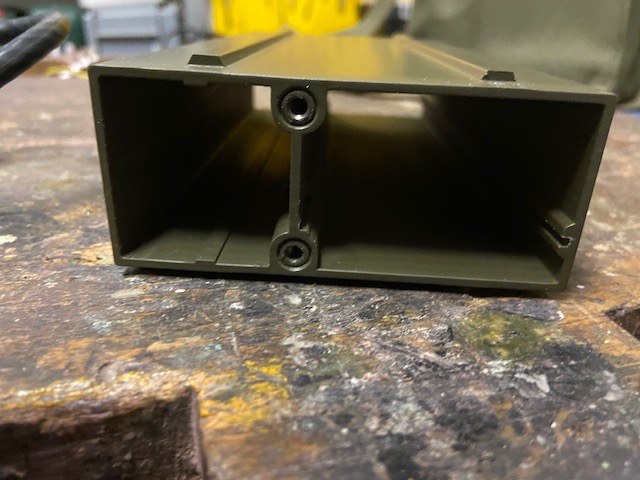
Bottom/battery lid with rubber seal.
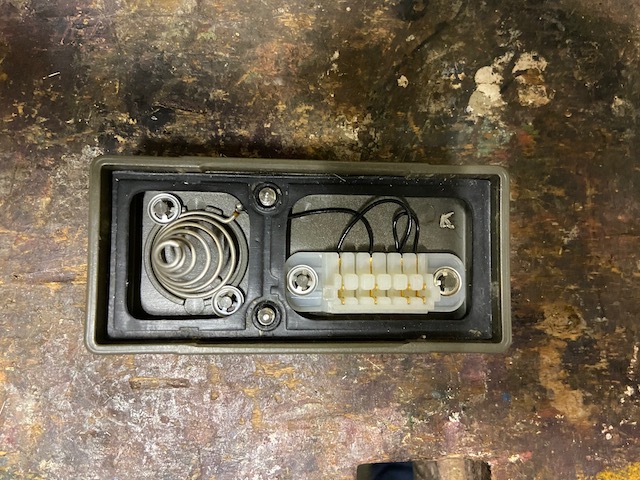
Inside front panel/top lid with rubber seal.
The board is connected to the top lid with a hinge.
The connectors between board and front-panel are a type of micro plugs.
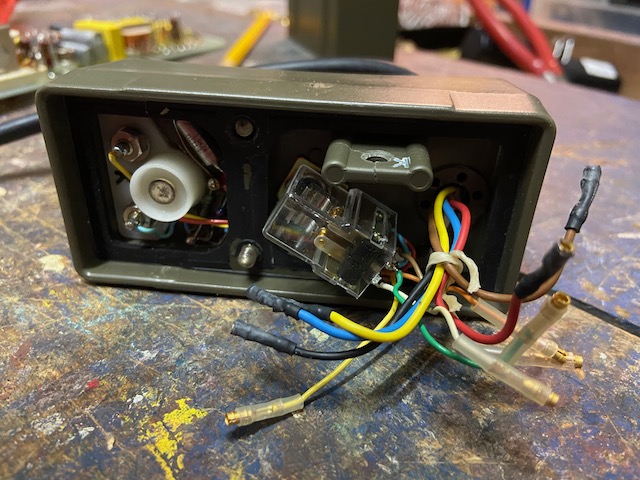
Top of the circuit board.
From the left: ring generator circuit, tone ringer, tx amplifier, front panel connectors.
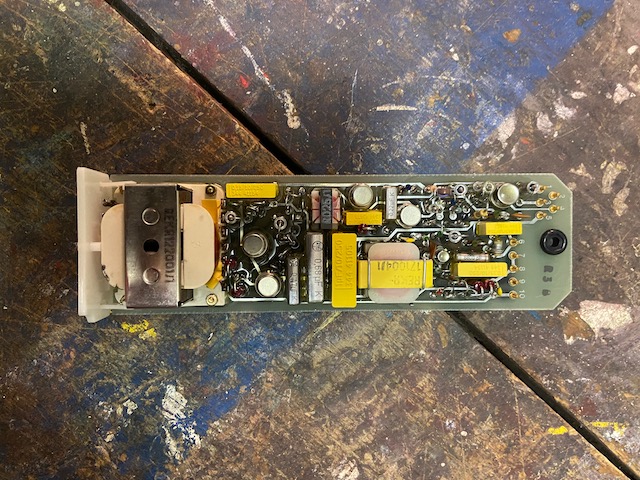
Bottom of the printed circuit board.
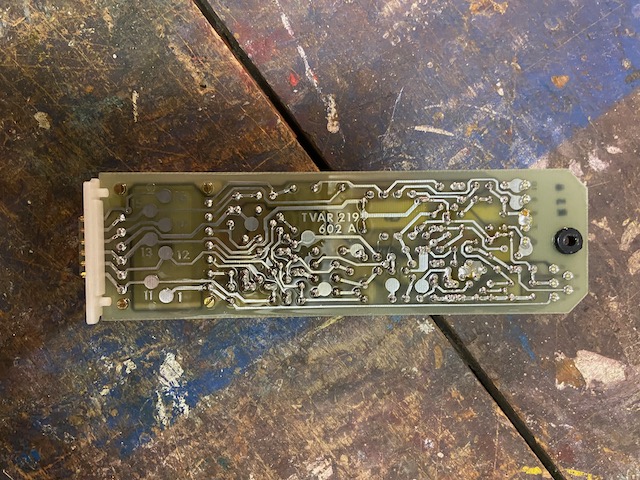
Front panel.
From the left: spring loaded line binding posts, ringer lamp, ring generator button, handset line.
Manufacturing date 1976.
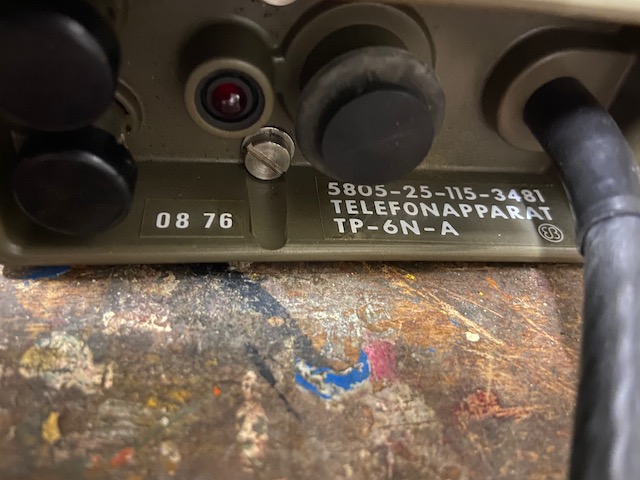
The waterproof handset.
Uses the same electrodynamic element on RX and TX side.
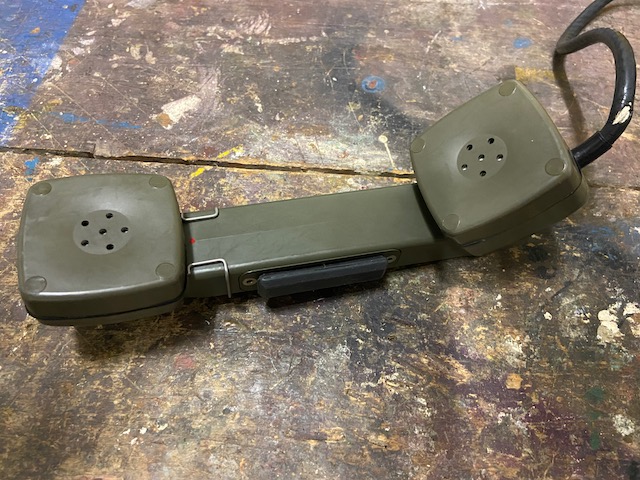
The handset type: H-67N.

The handset opened.
The rx and tx elements are identical.
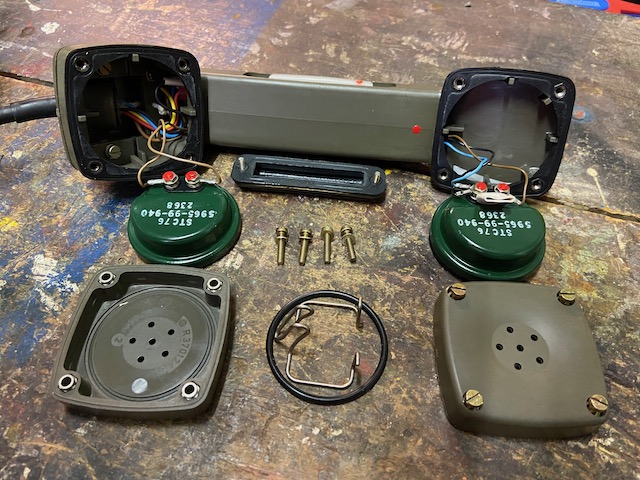
The rx element backside.
There is a "hand assembled" diac/varistor setup for click supression mounted to the rx terminals (here dismounted).
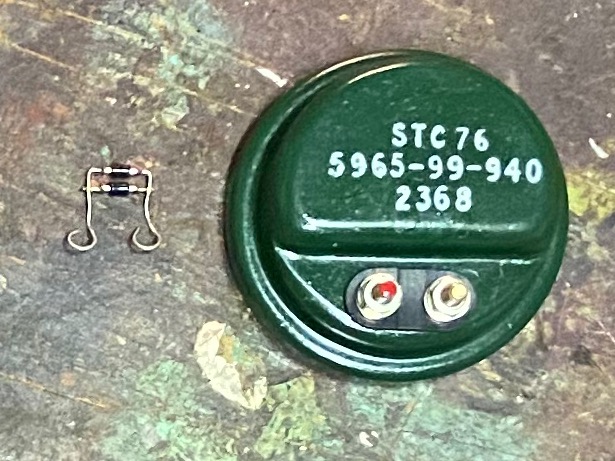
RX element front.
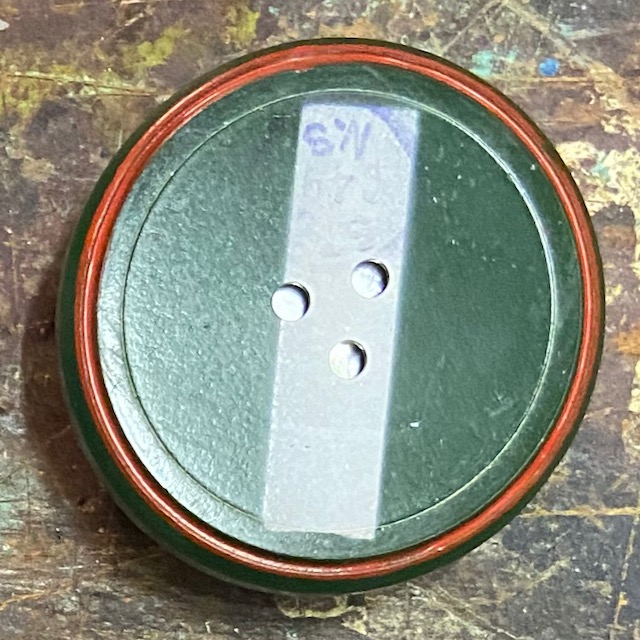
The push to talk and listen switch mechanism.
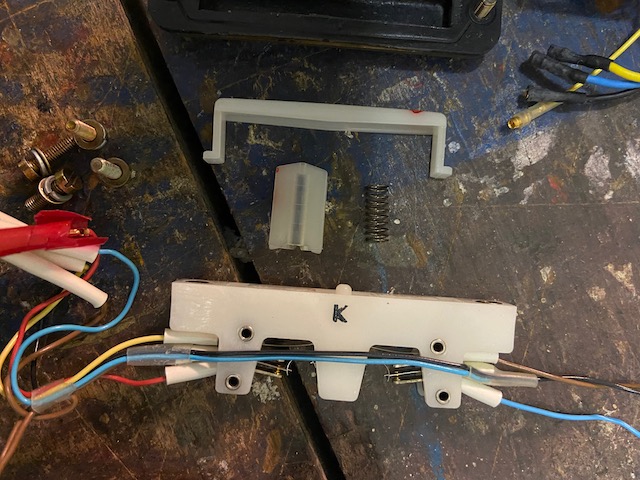
Ready to use.
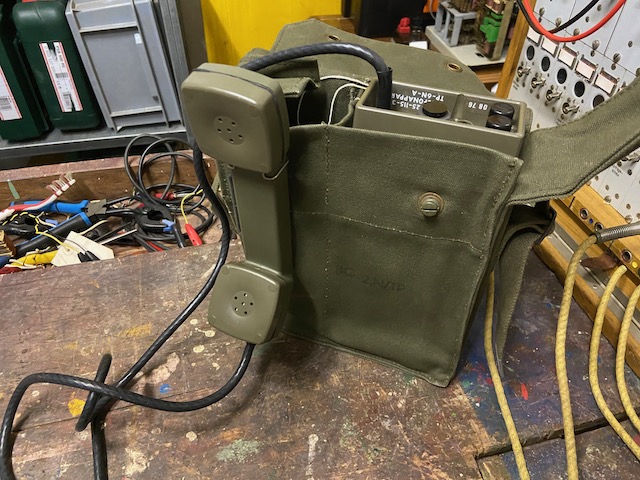
All stored in pouch.
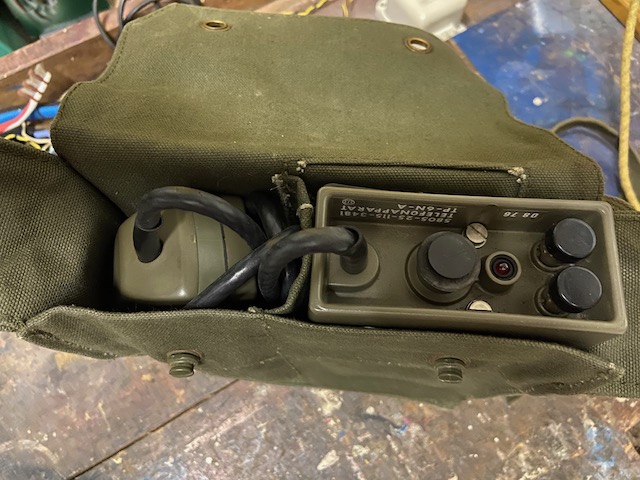
Ready for transport.
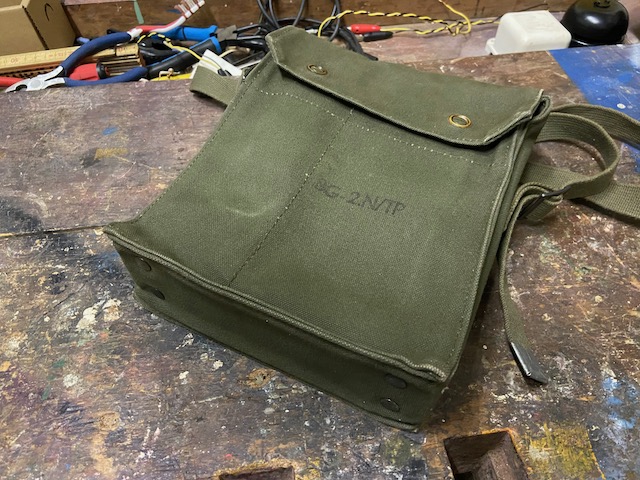
The spelling alphabet is provided on a take out card secured with a string and stored in a slide in compartment in the pouch.
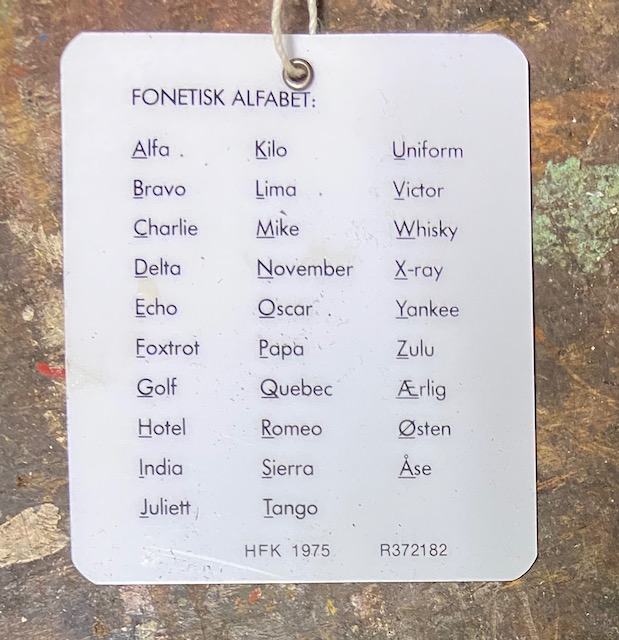
On the backside of the spelling alphabet a short user guide.
Preparation: Remove cover, insert 3 pcs. NBA 030 with plus pole (center pin) first.
Use: Ring out: press call button for 2-3 sec, the lamp lights up. Incoming ring: ringtone from the microphone, the lamp lights up.
To speak: talk: press the microphone switch. listen: press the microphone switch.
Line test (max. 10km): Line open: lamp does not light up when calling. Short-circuit: The lamp flashes slowly, the lamp brightness depends on the failure location.
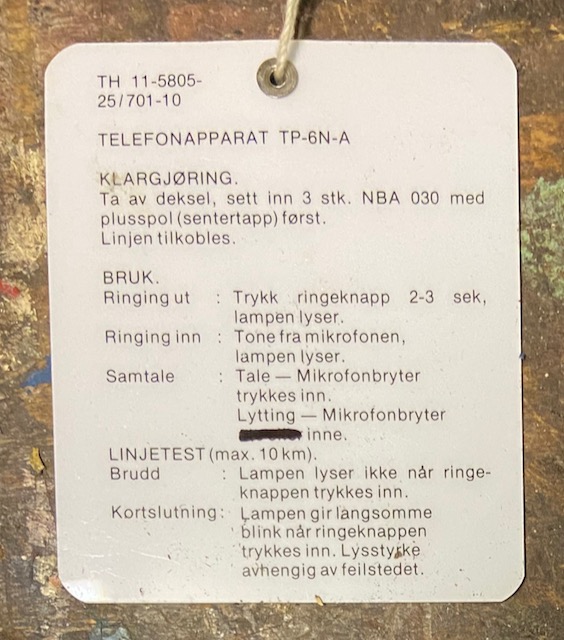
Functional diagram (selfmade, based on LM ericsson review Volume 51).

The dial unit (From Jane's Military Comms. 1st ed.).
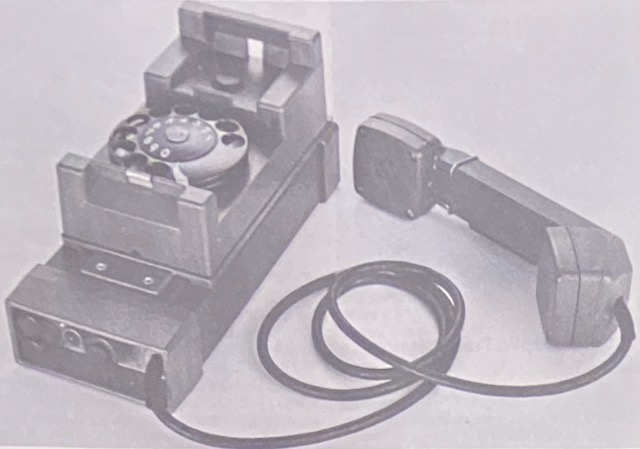
Dial unit disassembled.
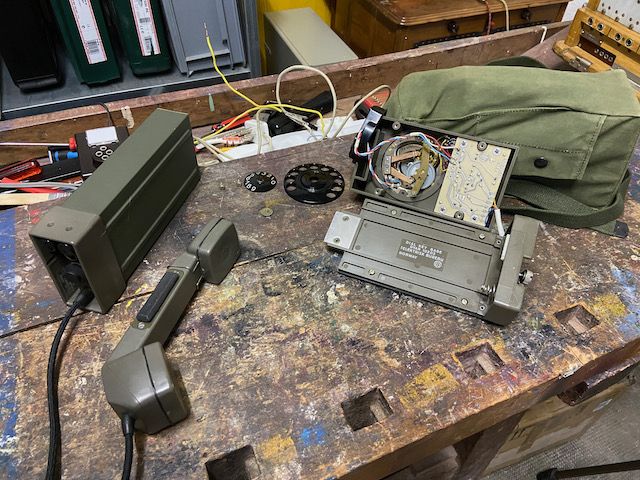
Dial unit ready to mount.
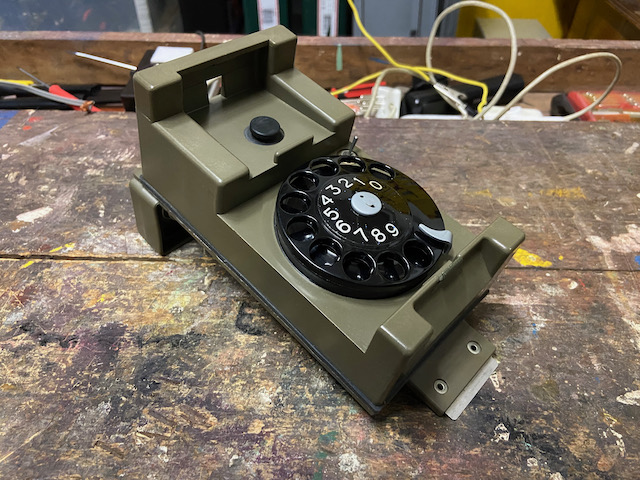
Rotary dial back.
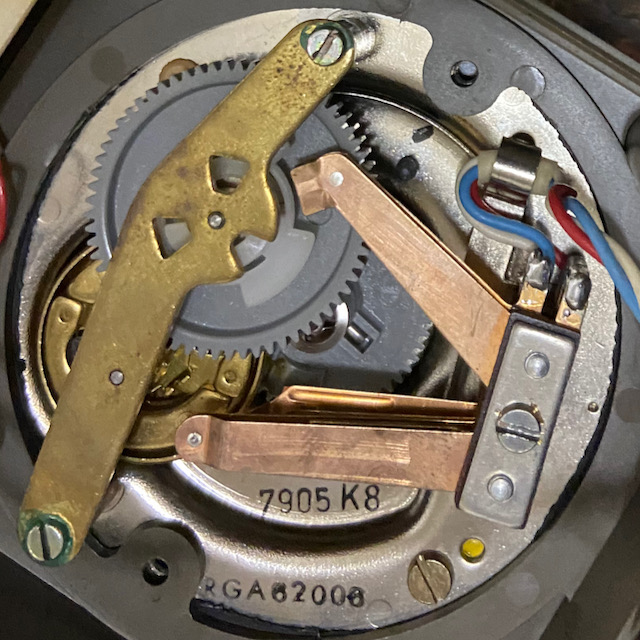
Rotary dial front open.
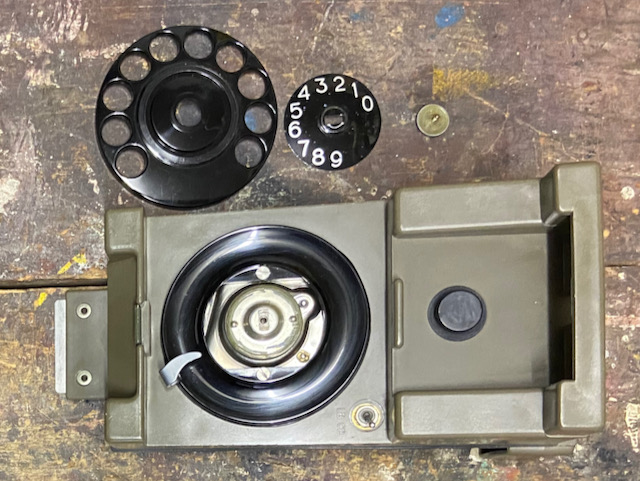
Dial unit bottom.
(Product name is "Dial key base").
The dial unit is attached to the telephone battery lid.
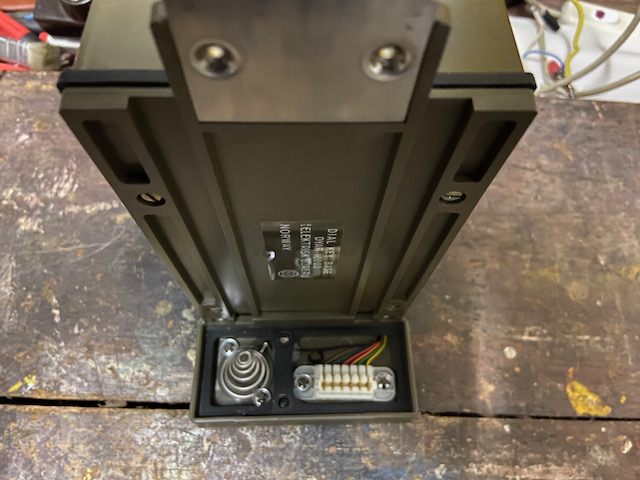
Dial unit mounted to use.
These dial units were in use in Sweden (using the Swedish 9..0 pattern instead of the standard 0..1).
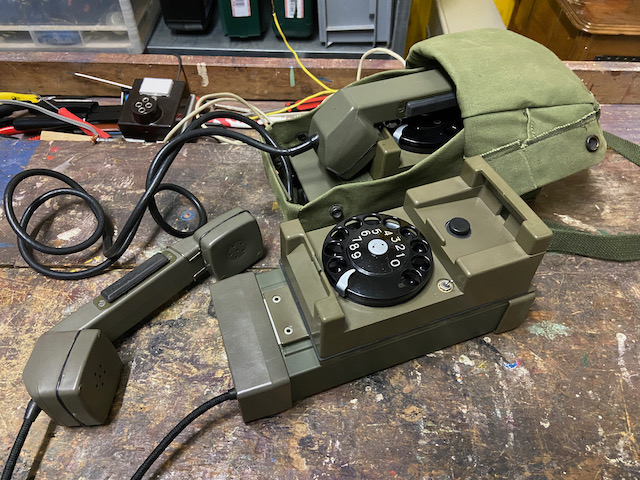
TP-6N with dial unit mounted stored in canvas bag.
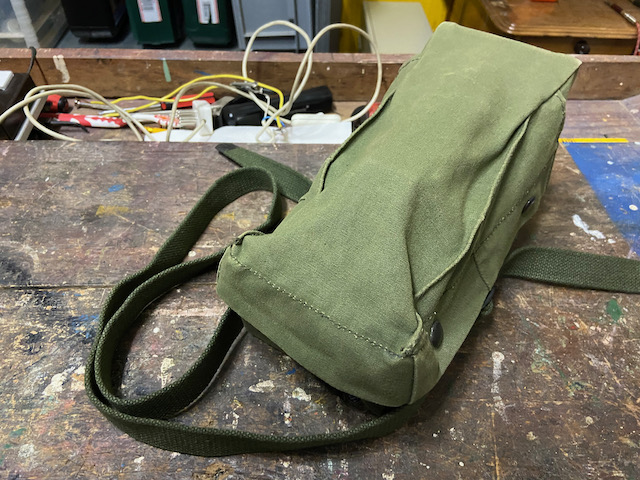
Creative Commons Attribution-ShareAlike 4.0 International License